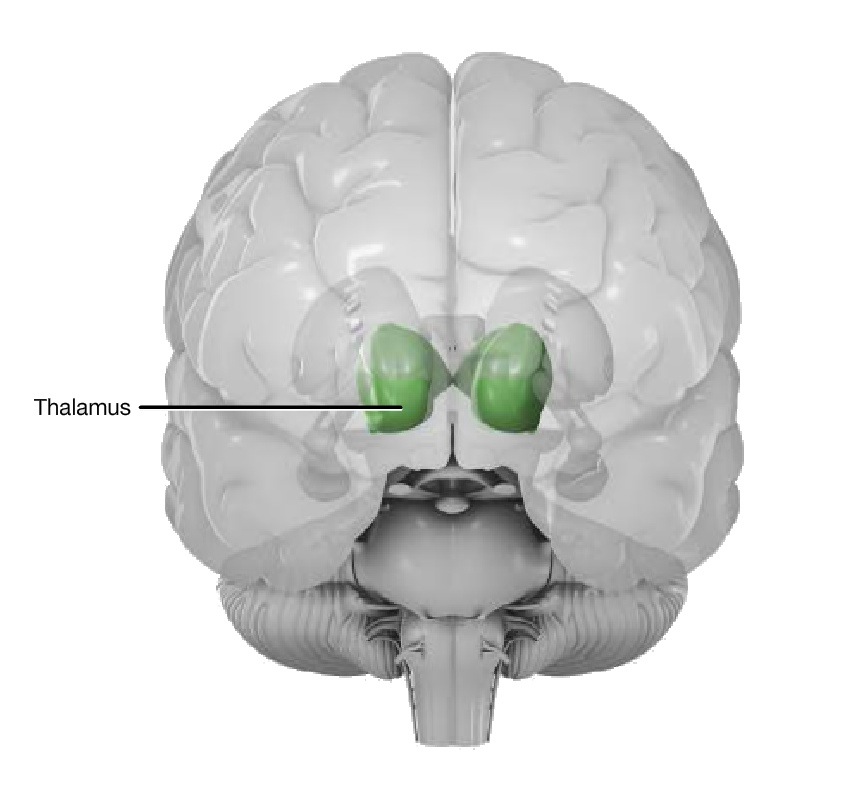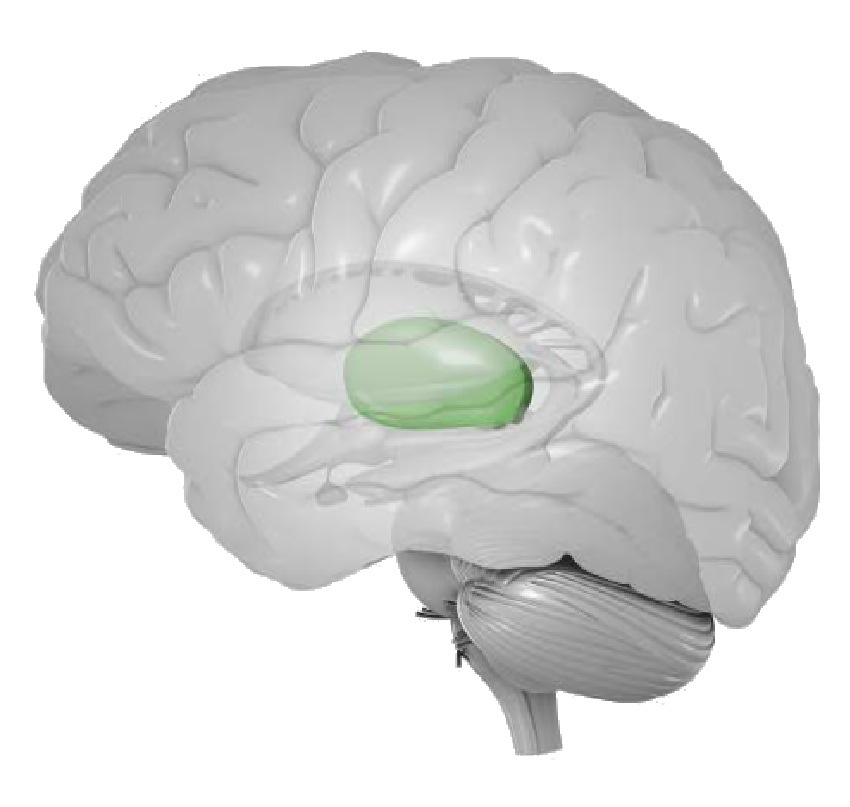
"When you think about brain activity it's correct to think about emergent properties at higher levels that depend on lower-level phenomena in the system."
—Philosopher Patricia Churchland of the University of California (1)
The brain stem
The brain stem, sometimes called the reptilian brain, is the oldest part of the human brain.
The main purposes of the brain stem, including the cerebellum and some of the lower portions of the midbrain, are to warn us of incoming information; to adjust posture and co-ordinate all muscular movements in the body; and to perform involuntary behaviours such as activating muscular contractions in the heart, intestines and other organs of the body vital for our life support system. (2)
Damage to the brain stem either causes immediate death or permanent paralysis in certain parts of the body.
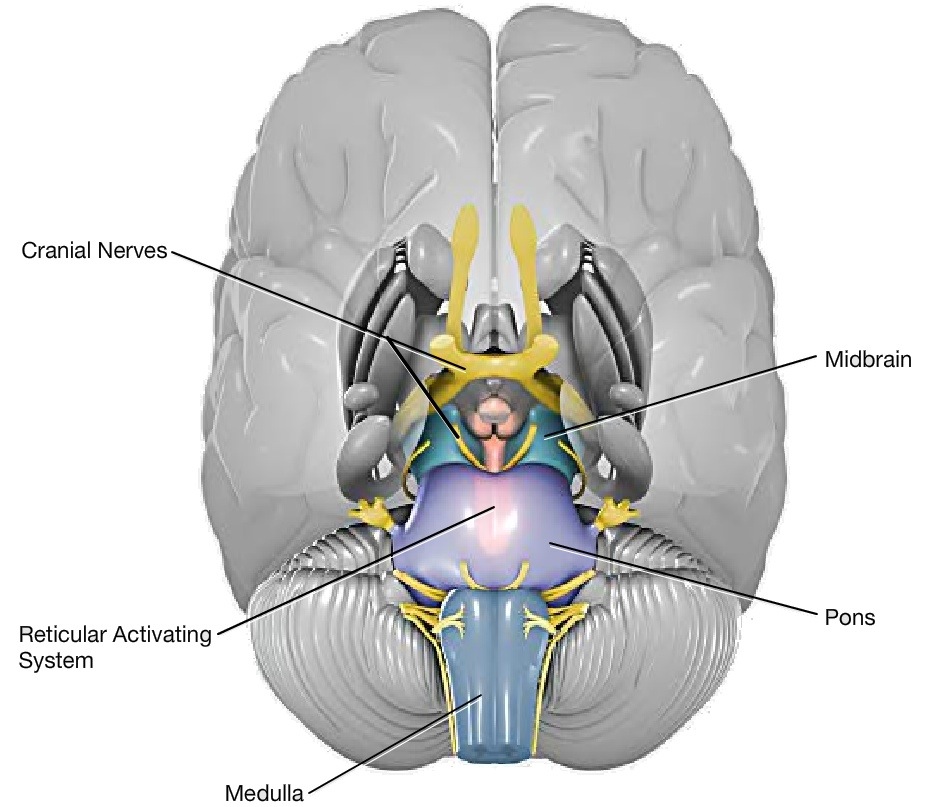
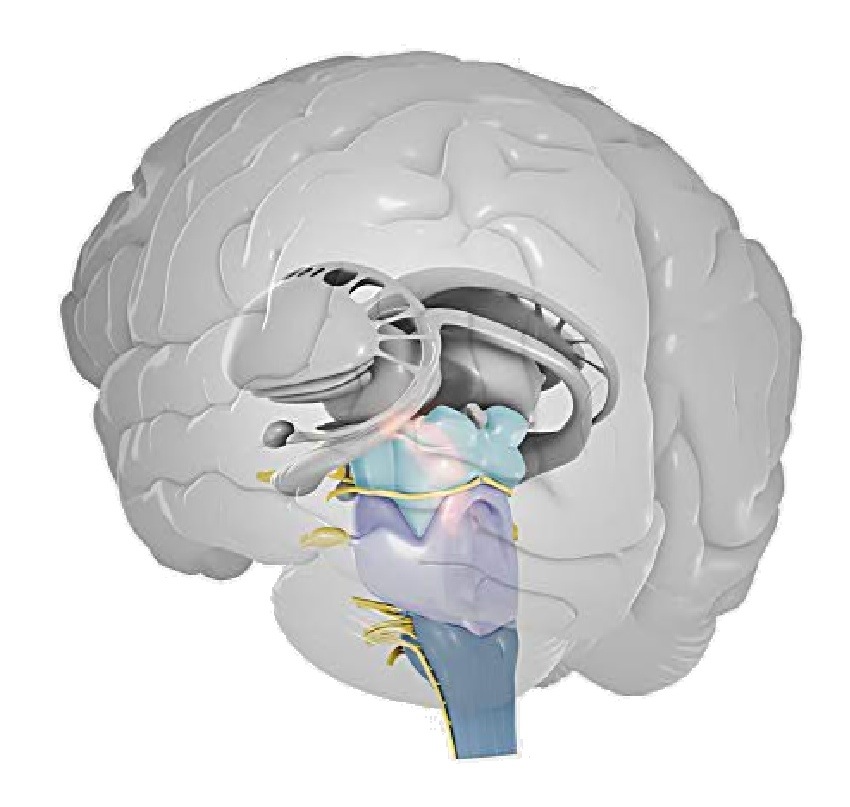
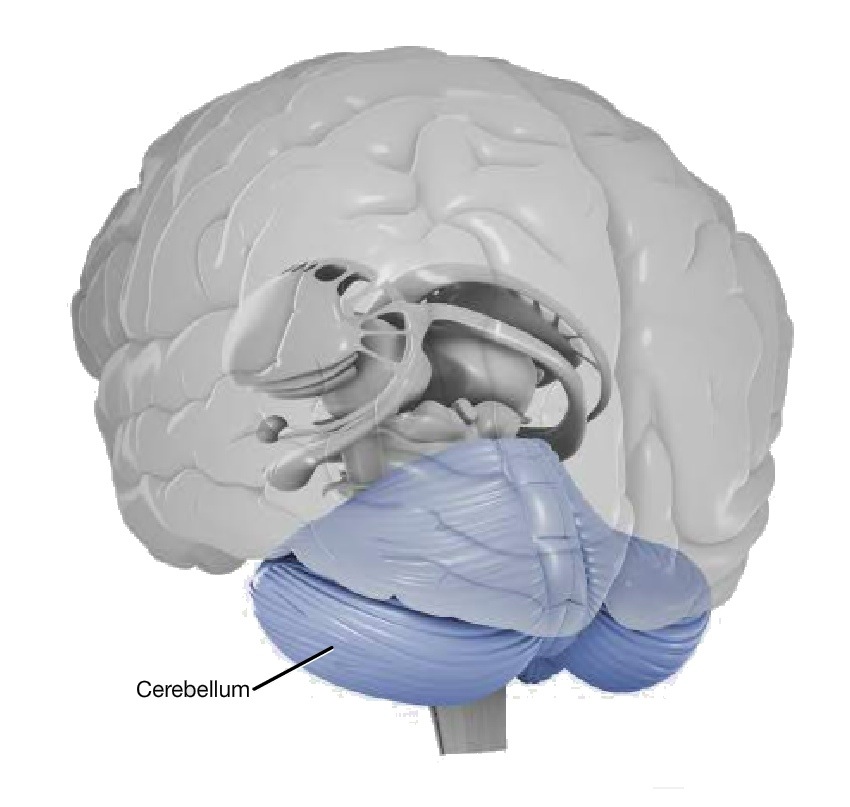
The midbrain section
The midbrain section, sometimes called the mammalian brain because of its high state of development in all mammals, consists of the thalamus, limbic system or primal brain and basal ganglia.
The limbic system can be further subdivided into three other structures known as the pituitary gland, hypothalamus and hippocampus.
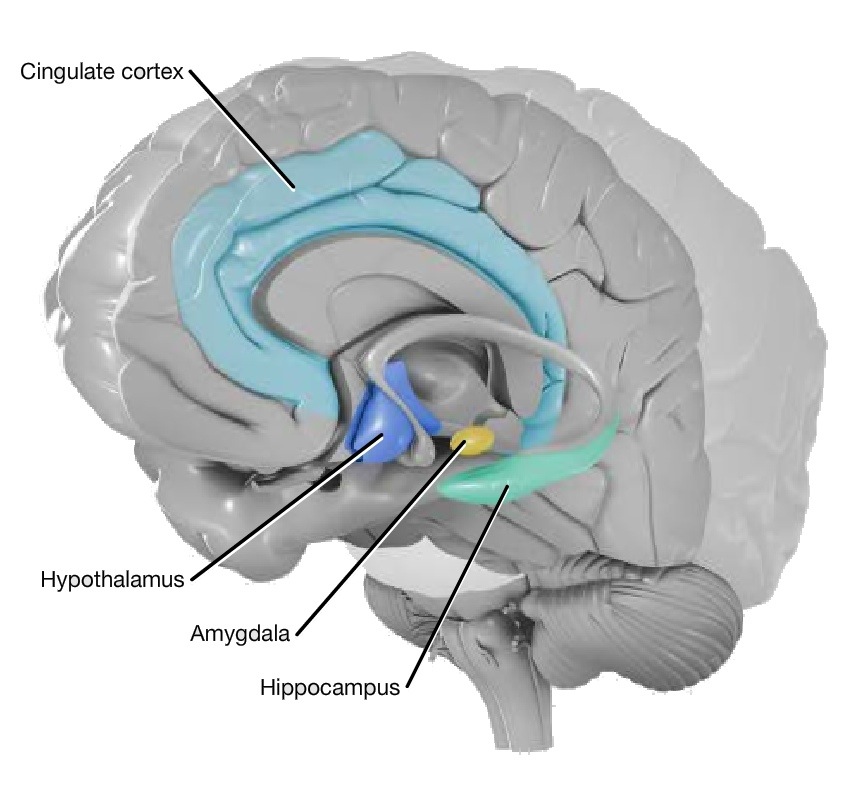
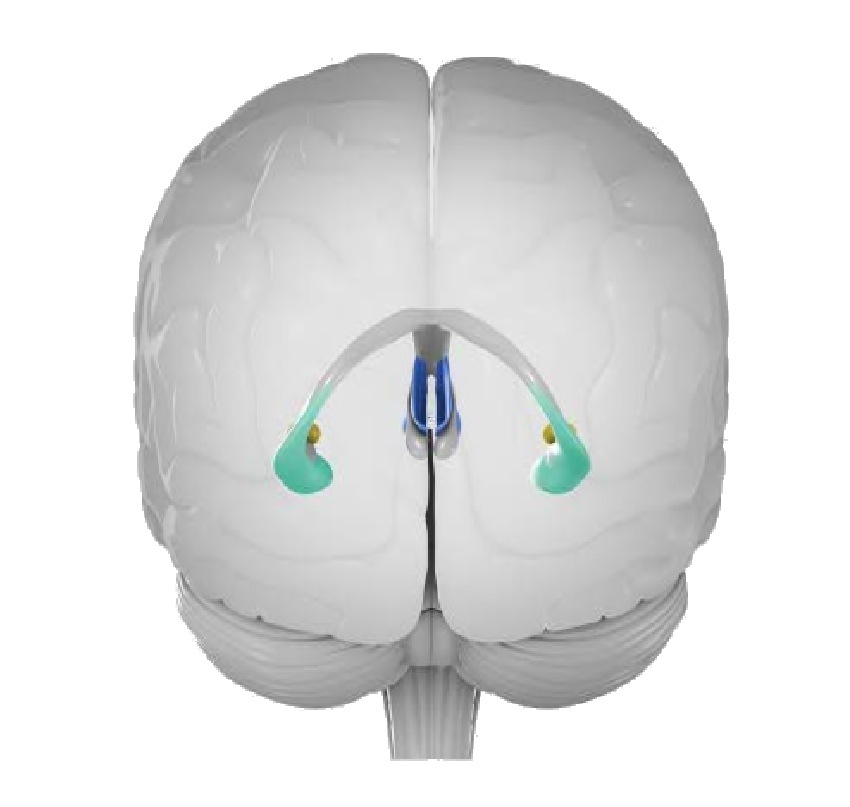
The basic function of the hypothalamus is to set up a biological clock that regulates the rate of muscular contraction in the body and the various biochemical reactions for controlling or alerting us of our instinctive need to eat, drink, sleep and wake, often on a regular, periodic basis. Furthermore, the hypothalamus also affects body temperature, water balance, bodily elimination and blood pressure. It achieves all these wide-ranging and vital functions by a combination of nervous impulse transmissions through the spinal cord and the secretion into the blood stream of a multitude of chemical hormones in the glands of the body through the master gland known as the pituitary gland. (3)
The removal or damage of the hypothalamus causes immediate death as the body cannot properly coordinate all of its functions in the right way on its own and the brain stem and cerebral cortex have not learned all the patterns needed to take over the functions of the hypothalamus for regulating basic bodily functions.
The hypothalamus also provides one other benefit to a living organism: it affects how we feel which in turn affects how we think and behave. In other words, this important structure, together with the pituitary gland, holds the seat of the two most elementary physiological emotions of great survival importance (4). These two emotions are normally represented in our everyday language as pleasure and pain, happiness and sadness, positive and negative, the good side and the bad side and so on. The hypothalamus can do this because it can release certain pleasurable hormones like endorphin, seratonin, dopamine and enkephalin during moments of actual or imagined sexual ecstasy or even deep peaceful rest, or the more unpleasant hormones like the steroid cortisol, which rapidly increases heart rate, perspiration and our ability to fight infections when we are stressed.
The constant denial to pleasurable experiences over a long period of time may reduce or even stop the production of pleasurable hormones in the brain. The eventual result is chronic depression and only legal drugs such as prozac and SAM-e (avoid seroxat in the UK or paxil in the US and its equivalent aropax in Australia because of the potential to create serious hallucinatory problems in around 25 per cent of patients and a greater probability of suicide among young people below 18 years of age) can help safely trigger the brain to produce the pleasurable hormones for alleviating the depression.
On the other extreme, too much intense pleasurable experiences can potentially lead to unhealthy obsessions. For example, if you enjoy a particular food so much at a young age that the positive emotion tends to override your rational thinking, you are more likely to be influenced by extremely subtle advertising of the same food type to eat again and again until eventually you become extremely obese and eventually die. The same is true of people who take pleasurable drugs.
An experiment in the 1950s shows just how powerful the state of happiness from our positive hormones can be and how it can affect our behaviours. A laboratory rat had a tiny tube passed through the skull such that a machine would provide the pleasurable hormone dopamine every time the rat pressed on a lever with one of its feet. The result was that not only did the rat continue pressing the lever to receive more of the pleasurable hormone, but the rat kept at it, ignoring the importance of eating food, until the rat died from starvation.
The emotion of happiness (or any other emotion), when put to the extreme, must be controlled at some point by your frontal cortex (i.e. by making the choice in your mind to sit back from the situation, understanding what you are doing and how you feel about it, why it is happening and the consequences of continually feeling this way) to avoid being controlled by the emotion to act on things that might end up being unhealthy and detrimental to your survival. Likewise, if you feel negative, you can choose the emotion of greater positive benefit and use the frontal cortex to help you feel that positive emotion again and eventually you can feel confident to achieve something different and more worthwhile and balanced goals until you become a more balanced and happier individual.
All this might seem easy to say. But doing is the hardest. And it can take time.
To assist you in this aim, it is highly recommended you try meditation. It is one of the most powerful techniques available to controlling the brain's emotions through your frontal cortex while helping you to choose and experience the right emotion to make you feel appropriately happy over the long term and so make you a better person.
As for the hippocampus, this structure seems to be designed to behave like short-term memory (the nearest analogy to this would have to be the Random Access Memory or RAM of a computer) where information gathered by the nervous system over the last few days or even weeks is temporarily stored (and possibly drawn upon by other parts of the brain). It is also a place where the neurons of the hippocampus are able to manipulate the information stored there at a very rapid pace before transfering or returning the essential patterns extracted from the raw information to more permanent storage areas in the cerebrum (if considered important), or in order to perform some immediate action/behaviour if the pattern is already known and recognised.
It can also be the place where thoughts are created.
At the end of the hippocampus is a small structure called the amygdala. This structure appears to tell the campus how strongly the memory of whatever is held in the hippocampus should be remembered by embellishing it with your emotions.
Damage to the hippocampus does not necessarily cause death, but will make it virtually impossible for a person to learn and remember new patterns. Hence an adult with minor damage or deterioration (including shrinkage) of the hippocampus will look normal in every respect except that he/she will quickly forget such simple things like a new person's face, or where his new place of residence actually resides, as soon as the experience or knowledge of the new event is removed.
Children who are abused or traumatised may also suffer deterioration through shrinkage of the hippocampus according to the Stanford University study of 15 children. According to findings published in the March 2007 edition of Pediatrics, highly stressed children as measured by the amount of cortisol from saliva swabs appear to have their hippocampus regions shrunk when their brains were analysed. As the head of the study, Professor Victor Carrion, said:
"[The children, aged 8 to 14 years, had all suffered] traumatic events including witnessing violence, physical abuse, separation and loss, sexual abuse, physical neglect and emotional abuse.
'...[The findings] provide preliminary human evidence that stress may indeed damage the hippocampus." (Robotham, Julie. Abuse can spur brain shrinkage in children: The Sydney Morning Herald. 3-4 March 2007, p.5.)
Researchers also noticed the shrinkage was highest among those children whose cortisol levels were at their highest.
To develop the functions of the hippocampus, exposing oneself to regular changes (i.e. access to new experiences and knowledge) in a highly positive and supportive environment and applying the mind to remembering and testing the memory (through games and other playful activity) to recall those changes (perhaps about 15 minutes per day) with the help of your emotions and imagination will help strengthen short-term memory. And it should be done in a positive and fun way for the technique to work effectively. Certain techniques in accelerated learning should help in this regard as the fastest means of developing the hippocampus to the necessary healthy size and development needed in the brain.
In fact, When you remember something and wish to retain it, not only should you try to add some form of emotion to the memory (preferably of the positive kind), but you should also try to associate this thing you are remembering with other events in your life such as the experiences you are going through or observe around you in both vivid images and sound. Or, to make the experiences more distinctive, use your imagination to exaggerate features you see. Then combine the item you wish to remember with the exaggerated feature. If it is sufficiently unusual or interesting the way the association is made and how it looks that it affects your emotion, you will remember the thing you want with incredible ease.
If you are trying to remember many things, each thing and the link to a feature or experience should be combined and linked together with other things and features to create an interesting story or cohesive picture in the mind linking all things. Then consciously make yourself remember the story every now and then to make sure all the memories are fresh in your mind.
This is how people with excellent memories achieve their amazing recall ability. There seems to be a part of the hippocampus that can, for some people, run automatically through all the memories every now and then as quick flashes and when someone provides a keyword, it instantly draws out the memory associated with the keyword.
UPDATE
24 August 2006
People who use their brain to regularly solve problems and remember things causes the hippocampus region to stay large and active and this helps to protect older people from getting dementia.
The structure called the basal ganglia is primarily concerned with initiating movement in the body. (5)
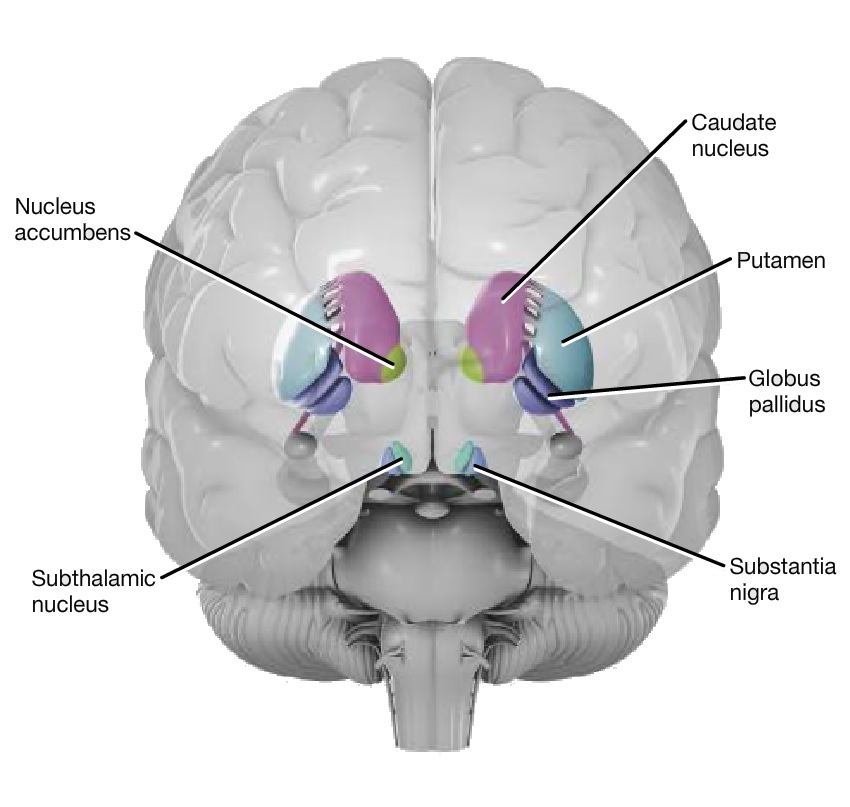
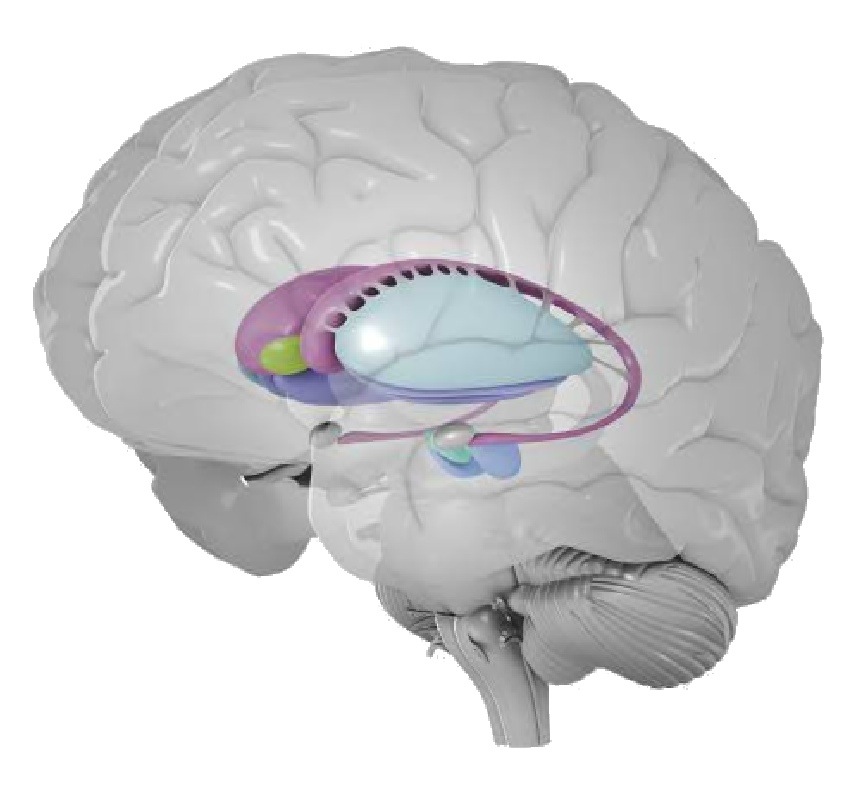
Finally, the thalamus is a major sensory integration centre and seems to be designed to help with, or initiate, consciousness with the outside world (6). In other words, the thalamus can control and rapidly process a great deal of information from the sensors of our body (except vision and smell, which go almost entirely to the cerebrum (7)) and to link this sensory information to other important functions in the brain.
The removal of the thalamus will probably cause death or instead the individual will be unable to process external stimuli of the sensors and therefore may withdraw entirely into the inner world.
